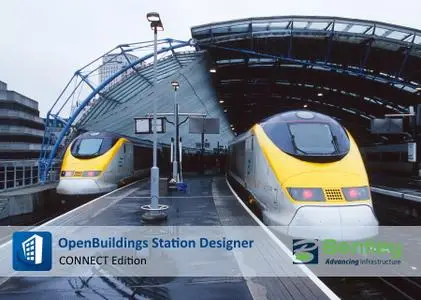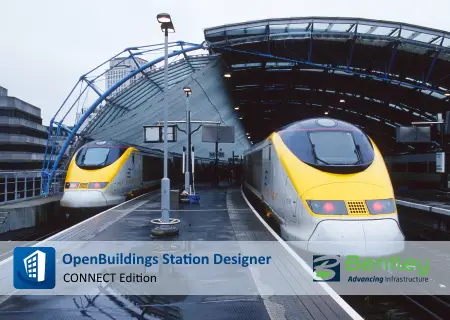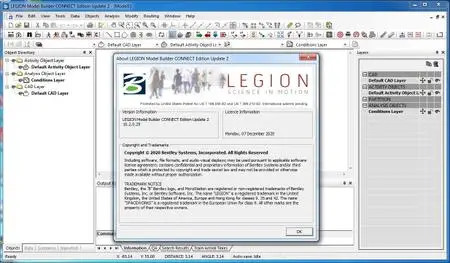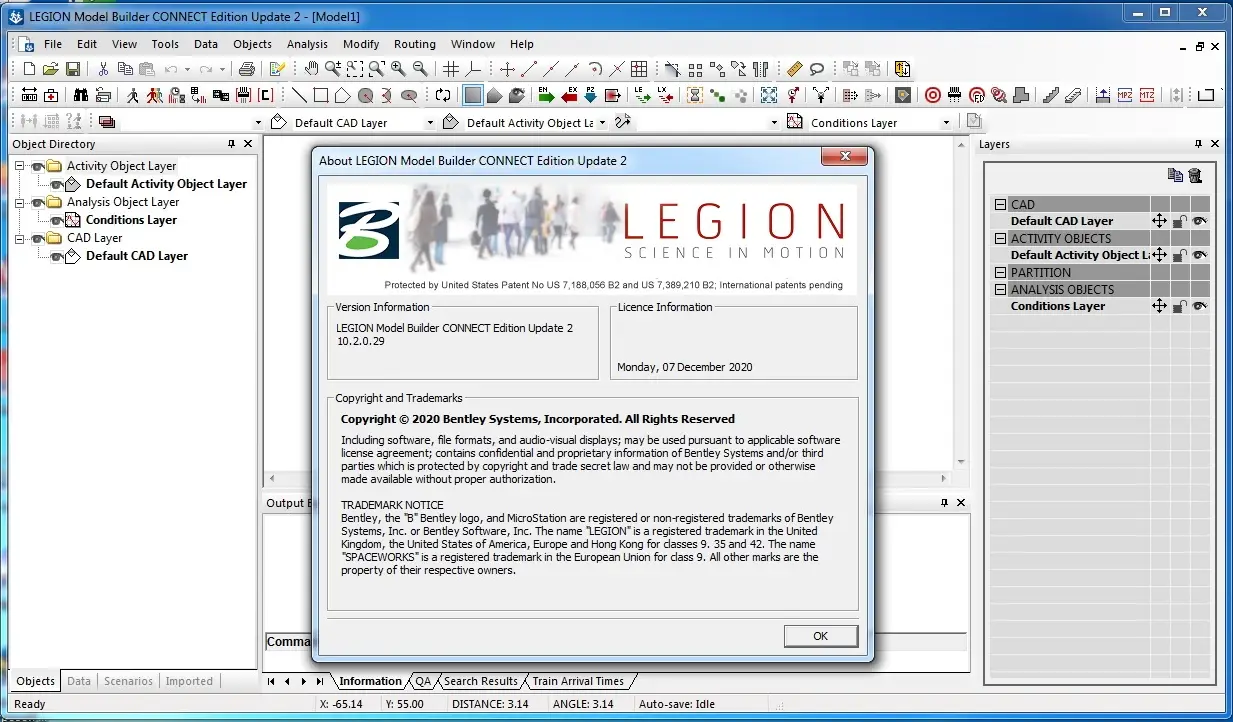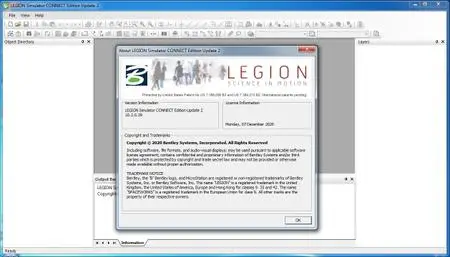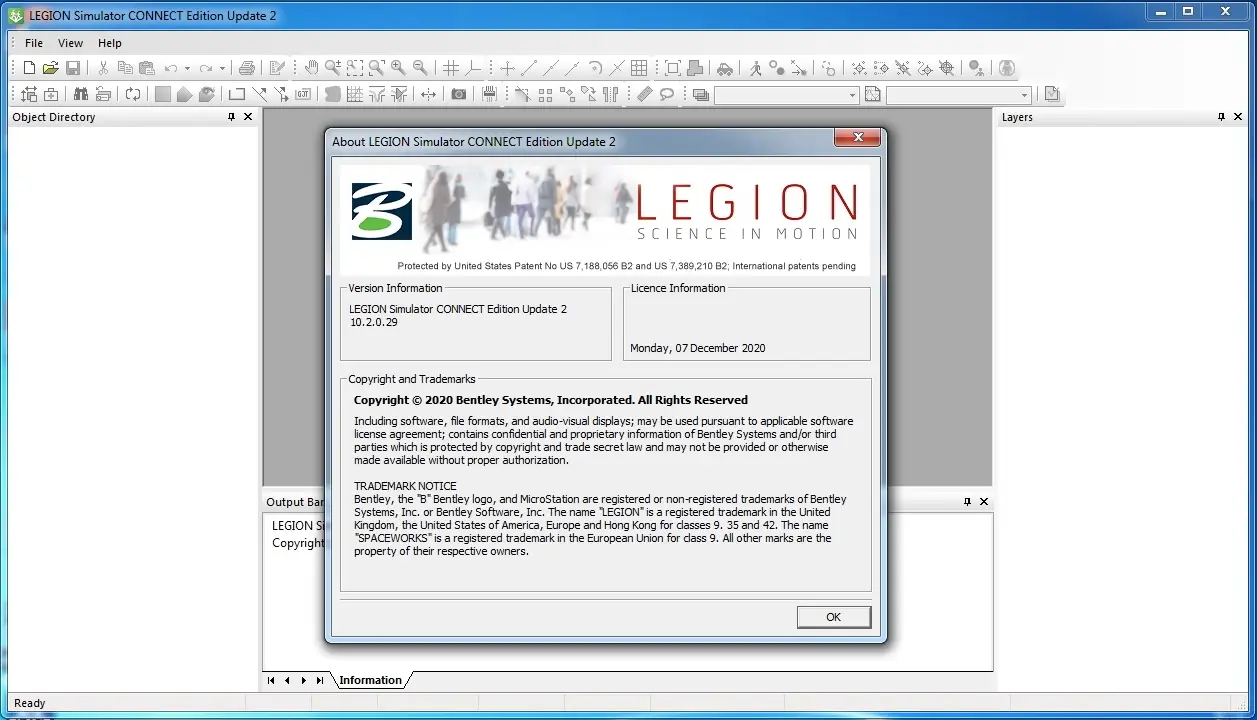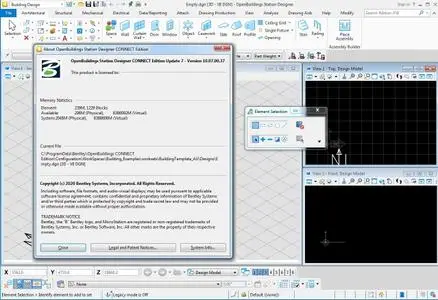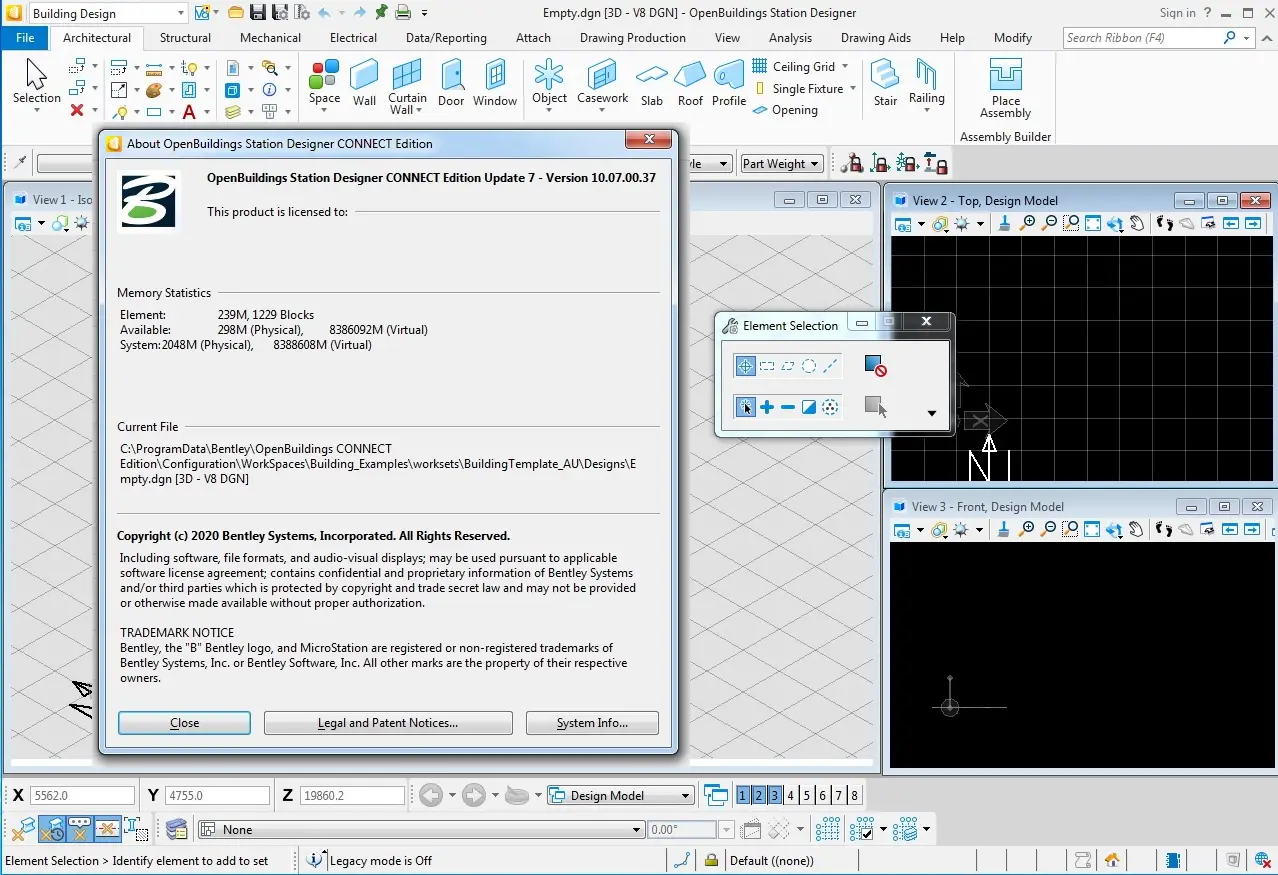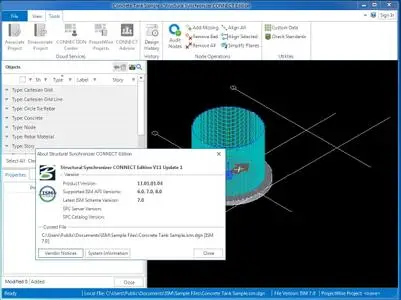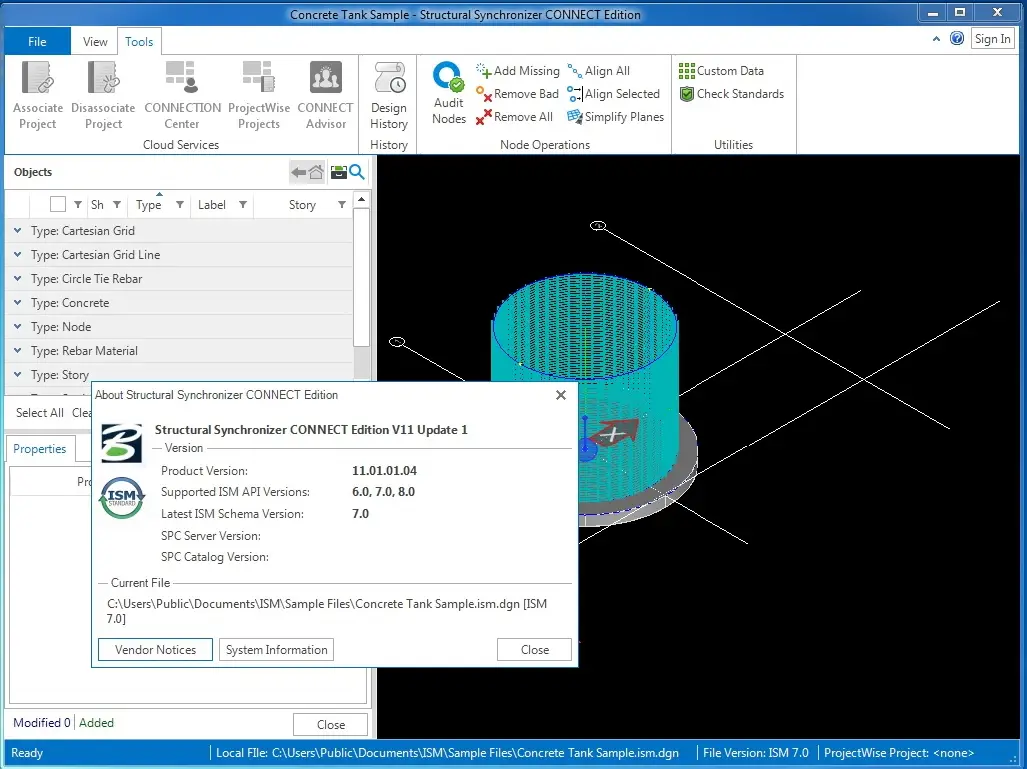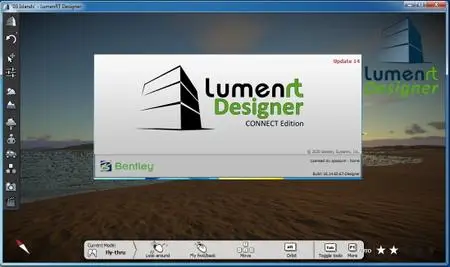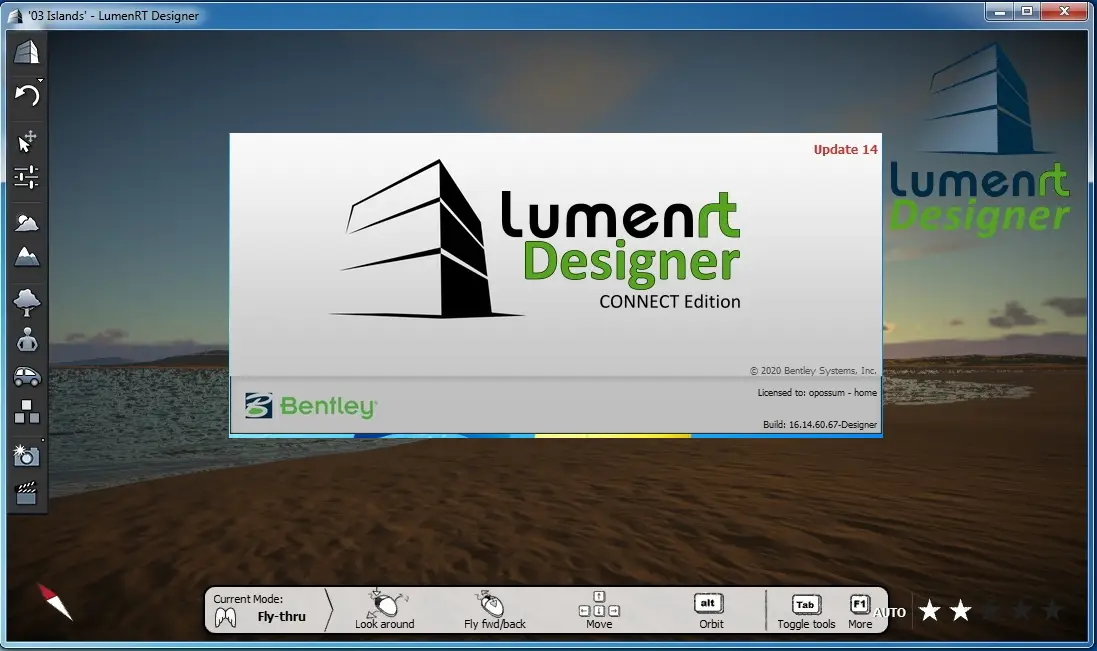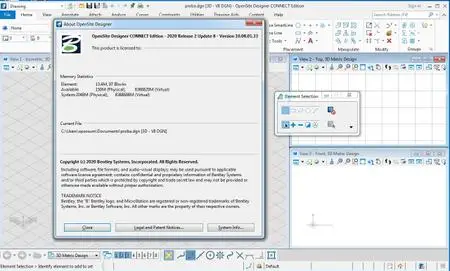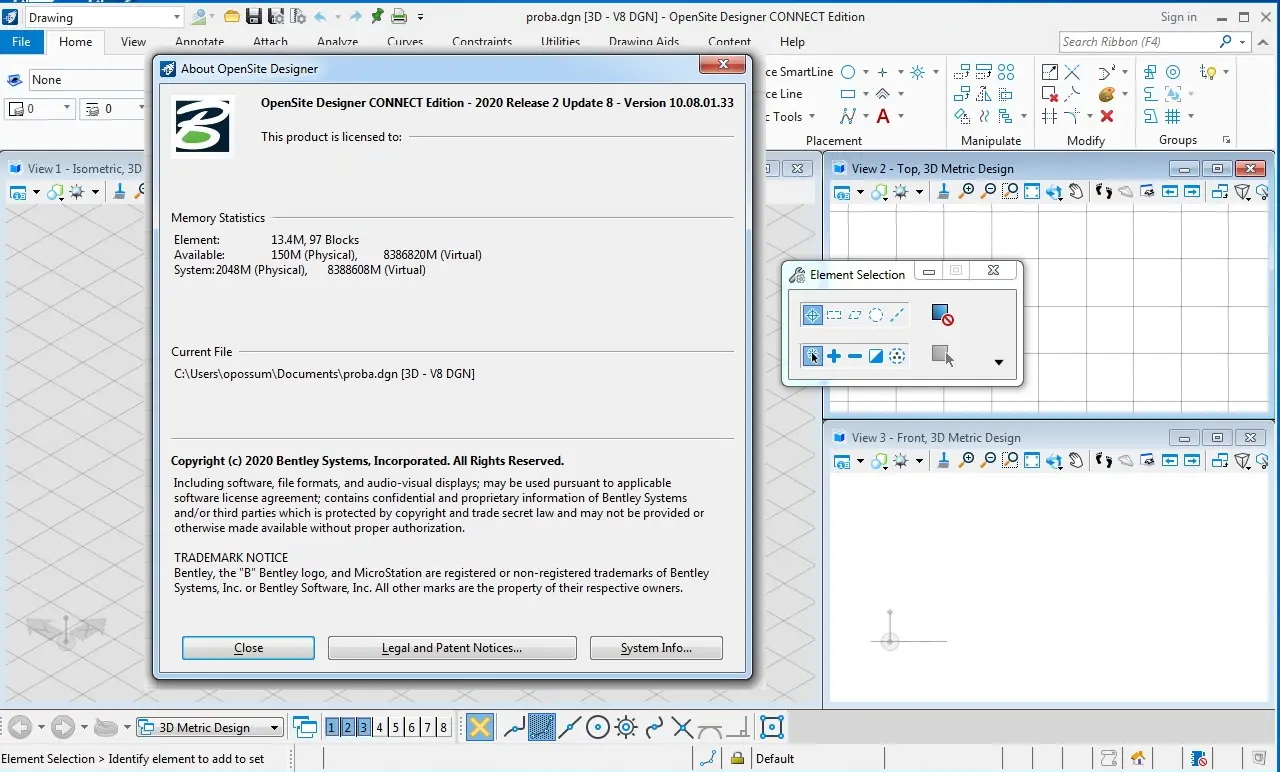OpenBuildings Station Designer CONNECT Edition Update 7 | 19.0 Gb
The OpenBuildings product team is pleased to announce the availability of OpenBuildings Station Designer CONNECT Edition, Update 7 (build 10.07.00.37) is a multidiscipline BIM application for railway station design and simulation. The application includes a work set with functional space definitions and a catalog of design components, and several GenerativeComponents templates for complex geometry, such as tunnels and platforms.
OpenBuildings Station Designer CONNECT Edition, Update 7 (build 10.07.00.37)
OpenBuildings Station Designer improves design quality by optimizing the functional space layout of the station building and the path of travel for the pedestrian. With OpenBuildings Station Designer, you can improve team collaboration and work alongside OpenRail Designer and OpenRoads Designer through geographic coordinate systems, combining the linear alignment of rail or road design and the vertical construction of the station building. OpenBuildings Station Designer allows you to create simulation scenarios by defining spaces, activities, passenger characteristics, and operational information—such as train timetables—to be used as input to LEGION Simulator, Bentley’s software for simulating and analyzing foot traffic
LEGION Model Builder CONNECT Edition, Update 2 (v10.02.00.29) is available as a companion application (optional installation; license included with OpenBuildings Station Designer) and can be included as part of any deployment of OpenBuildings Station Designer. LEGION Model Builder allows you to create pedestrian simulation scenarios by defining spaces, activities in spaces, and characteristics of people movement to be used as input to LEGION Simulator (optional installation; license not included with OpenBuildings Station Designer). Activities include, but are not limited to, definition of arrival points, destinations, waiting zones, queuing behaviors, stairs, and escalators.
LEGION Simulator CONNECT Edition, Update 2 (v10.02.00.29) is available as a companion application but requires a separate license, which is not included with OpenBuildings Station Designer. LEGION Simulator calculates pedestrian simulations based on LEGION Model Builder scenarios and provides review analysis with movement dot patterns and density heat maps.
OpenBuildings GenerativeComponents CONNECT Edition, Update 7 (v10.07.00.124) is available as a companion feature (optional installation; license included with OpenBuildings Station Designer) and this computational design platform can be included as part of any deployment of OpenBuildings Station Designer. Specialized GenerativeComponents template scripts are included to generate station assets relative to linear alignments utilizing parametric design and change-propagation supporting exploration of design alternatives. Additional information about the template scripts is available through a Bentley Community Wiki page which will also point to training opportunities.
OpenSite Designer CONNECT Edition 2020 Release 2 (10.08.01.33) - This release also introduces OpenSite Designer as a new companion application during installation. OpenSite Designer is a new application that employs an open modeling environment for the project delivery of site design projects from concept to completion. The application provides complete detailed design capabilities for rapid site modeling and analysis, earthwork optimization and quantification, drainage and underground utility design, automated project deliverables, and more. OpenSite Designer is currently only available in English.
What's New Highlights for OpenBuildings Station Designer CONNECT Edition, Update 7 (v10.07.00.37)
Drawing Composition Wizard integration with ProjectWise Design Integration
The Drawing Composition Wizard is the core of the 'Pedestrian Model Prep' workflow. This wizard reduces the level of knowledge needed for users to access Pedestrian Simulation using their project data. The Drawing Composition Wizard will assist with the necessary steps to prepare the models or drawings for import into LEGION Model Builder. This wizard accepts 2D Drawings (in dgn, dwg, and/or dxf format) or 3D Models (Bentley, Revit i-model, or IFC) as input into the wizard and creates a LEGION Model Builder-ready composite layout drawing. The Drawing Composition Wizard is now integrated with ProjectWise Design Integration and supports ProjectWise Managed Configurations.
What's New Highlights for LEGION CONNECT Edition (v10.02.00.29)
Platform - Train Interface (PTI)
The Train Interface (PTI) is moved from[Technology Preview] to commercial release. Note: Platforms defined in Update 1 must be redefined in Update 2, to create the permanent Platform edge/CAD element association.
- "Yellow Line" Enhancement
You can now specify the "yellow line" when drawing a Platform. Involves an extra step in the drawing command, after the option to simplify platform edge vertices. The Platform property dialog has a field for setting the distance from platform edge to yellow line.
- Edit Carriage Data
For train carriages, you can now edit Door Markings and Join Points.
- Naming of Train Carriages Improvements
Previously, the Train Carriage name could not be set without accessing the Save to Catalog dialog, after setting the Carriage properties. In this edition of LEGION Model Builder, the Carriage parameters dialog has new data fields "Name" and "Notes (optional)".
- Train Visualization Improvements
In LEGION Simulator, accessible spaces for Trains are displayed next to their Platform when a Train has arrived, and are hidden when Trains depart.
- Platform Edge /CAD association
Platform edge is now permanently associated with one or more CAD elements.
- 'Technology Preview' Feedback
Various improvements and bug fixes based on user feedback from the 'Technology Preview'.
Capacity by Density
Delay Points and Waiting Zones can now accept a desired pedestrian density in place of capacity. For example, Based on 'Fruin Level of Service’, Level C object capacity is then automatically calculated from that density and the object's accessible area. (Note - Fruin Levels of Service (LOS) are a common metric for pedestrian density in venues, on different surfaces (flat ground, stairs, escalators etc.). It also sets a typical pedestrian flow rate for each different LOS.
Social Distancing Enhancements
A variety of modelling and analysis tools have been added, to help modelling environments where social distancing is required.
- Capacity Calculator
Social distancing vastly reduces the capacity of waiting areas. Delay Point and Waiting Zone have a Capacity Calculator to help understand capacity based on social distancing.
- Socially-distanced Waiting Area
Quickly and easily define waiting areas which enforce social distancing between pedestrians.
- Socially-distanced Queue
Quickly and easily define complex queuing structures which enforce social distancing between pedestrians.
- Occupancy Estimator
Understand what social distancing means for maximum occupancy of a venue and its various pedestrian spaces. Use this tool to calculate upper limits of socially-distanced occupancy, and compare with normal Occupancy Ratings.
- Social Distancing Proximity Breach Maps
Show areas of a model where social distancing is not being adhered to, and for how long. Helps identify areas where managed intervention may be needed to enforce social distancing.
- Entity Proximity Indicator
Highlights entities whose socially-distanced personal space is encroached by neighboring entities. Helps identify areas where managed intervention may be needed to enforce social distancing.
Bentley Systems’ new OpenBuildings platform is more than just AECOsim Building Designer rebranded. The Bentley development team intends to play to its strengths with focused, vertical design tools, cross disciplinary workflows and open data.
With the arrival of OpenRoads and OpenRail for civils and rail design, and the much-needed simplification of the Bentley Systems product portfolio, an ‘OpenBuildings’ was inevitable. But the new Bentley Systems brand, announced in October, isn’t just about giving AECOsim Building Designer a new name; it’s about transforming the building design tool into an open platform that can be tightly integrated with tools for other disciplines; not just the road / rail design and simulation (structural, geotechnical, energy and pedestrian) applications from the Bentley stable but those from third parties as well.
Bentley is also looking to use OpenBuildings as a platform on which to build niche vertical design tools, focused on specific workflows. AECOsim Building Designer simply isn’t getting a look in on many bread and butter building projects because of the dominance of Autodesk Revit.
AECOsim Building Designer has always been relatively strong in rail and metro station design because of Bentley’s dominance in the civil and rail markets, so it makes sense that the first asset-specific design tool that Bentley has built on top of its new platform is OpenBuildings Station Designer.
OpenBuildings Station Designer includes special templates for creating tunnel segments (by utilising Bentley’s computational design tool GC), which are based on linear alignments from OpenRail. So, if the track changes, the tunnel will automatically change as well, and the station will also align.
As one would expect, the software also includes parametric digital components such as gates, turnstiles, signs, lifts and escalators that are very specific to an asset type like a station.
However, simulation isn’t limited to stresses, strains, deformation and stability; it also encompasses human behaviour. Bentley’s newly acquired pedestrian simulation technology, Legion, which uses machine learning to predict how people will move through a building, will sit on top of OpenBuildings Station Designer. The software can be used for emergency evacuation, circulation and operational efficiency, such as working out how to get passengers off trains faster, down into the metro or into the retail stores.
Pedestrian simulation is not just applicable to station design and will almost certainly play an important role in other vertical OpenBuildings design tools, which Bentley has said it intends to launch in the future. Stadium and airport design seem the most likely candidates although there is a risk of becoming too niche.
Customisation and collaboration are key differentiators between AECOsim Building Designer and OpenBuildings. They currently share the same traditional software development kit (SDK) but what makes OpenBuildings different is that it can take full advantage of Bentley’s new integrated product stack. Firms can use the new cloud-based services and also connect to third-party applications through the open source iModel.js library and the iModelHub, which offer web-based APIs.
For some years now, Bentley has been losing the battle with Autodesk and other firms when it comes to mainstream building design software. Now with a focus on verticals like station design it is starting to play to its strengths, offering a building design tool that can take advantage of its ‘open’ applications in areas such as rail and road design, pedestrian simulation, structural analysis and geotechnical engineering.
OpenBuildings Station Designer - The Workflow
Bentley Systems is a software development company that supports the professional needs of those responsible for creating and managing the world’s infrastructure.
Product: OpenBuildings Station Designer
Version: CONNECT Edition Update 7 (build 10.07.00.37) *
Supported Architectures: x64
Website Home Page : www.bentley.com
Language: english
System Requirements: PC **
Size: 19.0 Gb
OpenBuildings Station Designer CONNECT Edition Update 7 (build 10.07.00.37)
OpenSite Designer CONNECT Edition Update 8
Structural Synchronizer CONNECT Edition V11 Update 1
LEGION Simulator CONNECT Edition 10.2.0.29
LEGION ModelBuilder CONNECT Edition 10.2.0.29
LumenRT_Designer_english_16.14.60.67_28882
Bentley LumenRT Content Objects 16.14.60.86
Bentley LumenRT Content People 16.14.60.86
Bentley LumenRT Content Plants 16.14.60.77
OpenSite Designer CONNECT Edition Update 8
Structural Synchronizer CONNECT Edition V11 Update 1
LEGION Simulator CONNECT Edition 10.2.0.29
LEGION ModelBuilder CONNECT Edition 10.2.0.29
LumenRT_Designer_english_16.14.60.67_28882
Bentley LumenRT Content Objects 16.14.60.86
Bentley LumenRT Content People 16.14.60.86
Bentley LumenRT Content Plants 16.14.60.77
Hardware requirements for OpenBuildings Station Designer CONNECT Edition
OpenBuildings Station Designer CONNECT Edition is a native 64-bit application that will operate on Windows 7 and higher versions. Hardware requirements are provided in the table below.
Operating System
- Windows 10 (64-bit)
- Windows 8 and 8.1 (64-bit)
- Windows 7 (64-bit)
Note: Windows 7 operating system is supported only if you have its service pack (SPI) installed.
Processor
Intel or AMD processor 1.0 GHz or greater. OpenBuildings Station Designer is not supported on a CPU that does not support SSE2.
Memory
16 GB minimum 32 GB recommended. More memory generally improves performance, particularly when working with larger models.
Hard Disk
24 GB free disk space (includes the 16 GB install footprint for a complete installation), 10-25 GB depending on additional installations such as Companion Features and Companion Products.
Video
See the graphics card manufacturer for latest information on DirectX drivers. 512 MB of video RAM or higher is recommended. If insufficient video RAM or no graphics card supported by DirectX is found, OpenBuildings Designer attempts to use software emulation. For optimal performance, graphics display color depth should be set to 24-bit or higher. When using a color depth setting of 16-bit, some inconsistencies will be noted. For more information on recommended workstation profiles for OpenBuildings Designer, see MicroStation System Requirements
Resolution
1600 x 1200 or higher
OpenBuildings Station Designer CONNECT Edition is a native 64-bit application that will operate on Windows 7 and higher versions. Hardware requirements are provided in the table below.
Operating System
- Windows 10 (64-bit)
- Windows 8 and 8.1 (64-bit)
- Windows 7 (64-bit)
Note: Windows 7 operating system is supported only if you have its service pack (SPI) installed.
Processor
Intel or AMD processor 1.0 GHz or greater. OpenBuildings Station Designer is not supported on a CPU that does not support SSE2.
Memory
16 GB minimum 32 GB recommended. More memory generally improves performance, particularly when working with larger models.
Hard Disk
24 GB free disk space (includes the 16 GB install footprint for a complete installation), 10-25 GB depending on additional installations such as Companion Features and Companion Products.
Video
See the graphics card manufacturer for latest information on DirectX drivers. 512 MB of video RAM or higher is recommended. If insufficient video RAM or no graphics card supported by DirectX is found, OpenBuildings Designer attempts to use software emulation. For optimal performance, graphics display color depth should be set to 24-bit or higher. When using a color depth setting of 16-bit, some inconsistencies will be noted. For more information on recommended workstation profiles for OpenBuildings Designer, see MicroStation System Requirements
Resolution
1600 x 1200 or higher
Please visit my blog
Added by 3% of the overall size of the archive of information for the restoration
No mirrors please
Added by 3% of the overall size of the archive of information for the restoration
No mirrors please


